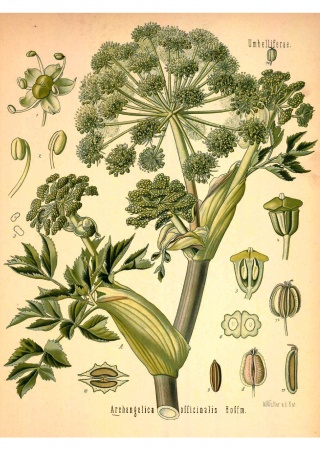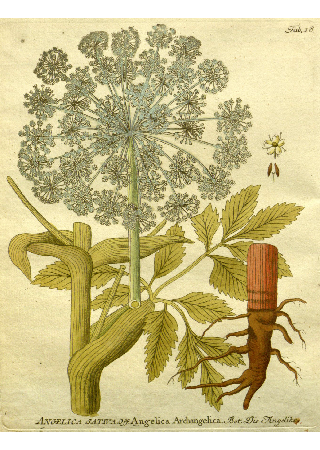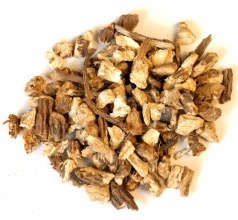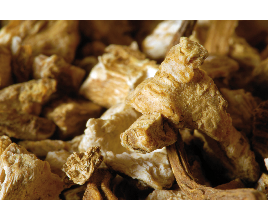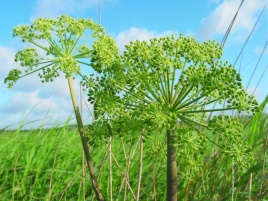Angelica
- …Archangelica comes from Latin archangelus, meaning archangel?
- …angelica contains bitter substances that cause sensitivity to sun?
- …angelica is an ingredient in many health food additives, just like ginseng?
- …confectioners use candied angelica stems and leaves to decorate cakes and pastries?
- …northern European nations boil young angelica shoots in reindeer milk?
- …the French use angelica sap during the manufacture of essences and liqueurs (chartreuse)?
- …the Swiss distil fermented angelica roots for vodka and use the dried, powdered root for tea?
- …angelica is one of the ingredients in vermouth?
- …angelica is a massive plant, growing up to 2.5 meters high?
- …the parts of Archangelica officinalis used as a spice are primarily the roots and seeds?
Chicken breasts with vegetables and lemon sauce
4 chicken breasts
4 carrots
4 angelica roots
1 smaller leek
5 tablespoons butter
4 tablespoons stone-ground horseradish mustard
3 tablespoons chopped parsley
2 tablespoons lemon juice
1 tablespoons grated lemon peel
150 ml chicken broth (bouillon cube)
pinch of sugar
pepper, salt
Cut up carrots, angelica roots and leek and boil for 6-8 minutes in large pot of water. Drain, rinse with cold water and let dry. Simmer vegetables in butter for 6-8 minutes, add salt and pepper to taste, mix in parsley, mustard and keep warm. Salt and pepper chicken breasts, braise in butter for 12-15 minutes, remove from pan and keep warm. In the same pan, add lemon juice, lemon peel, chicken broth and simmer for 3 minutes. Add salt, pepper and sugar to taste. Serve with boiled potatoes.
Angelica is one of the few medicinal and spice plants from Greenland, Iceland and Scandinavia. During the middle ages, angelica root was used as an exceptionally effective anti-toxin. Angelica was part of the legendary "red eye", a quack remedy said to cure all ills. According to ancient legends, angelica was endowed with the "miraculous of angels" and was given to humanity by the archangel Michael himself. The day of the patron saint Michael, May 8th according to the old Julian calendar, is the day when angelica blooms. It was acknowledged as a miraculous cure for the plague in 1510 in Milan, Italy, and 200 years later in England as well. Angelica spread south in the 14th century and today grows wild in damp places, and alongside roads and streams in northern Europe and Asia.

